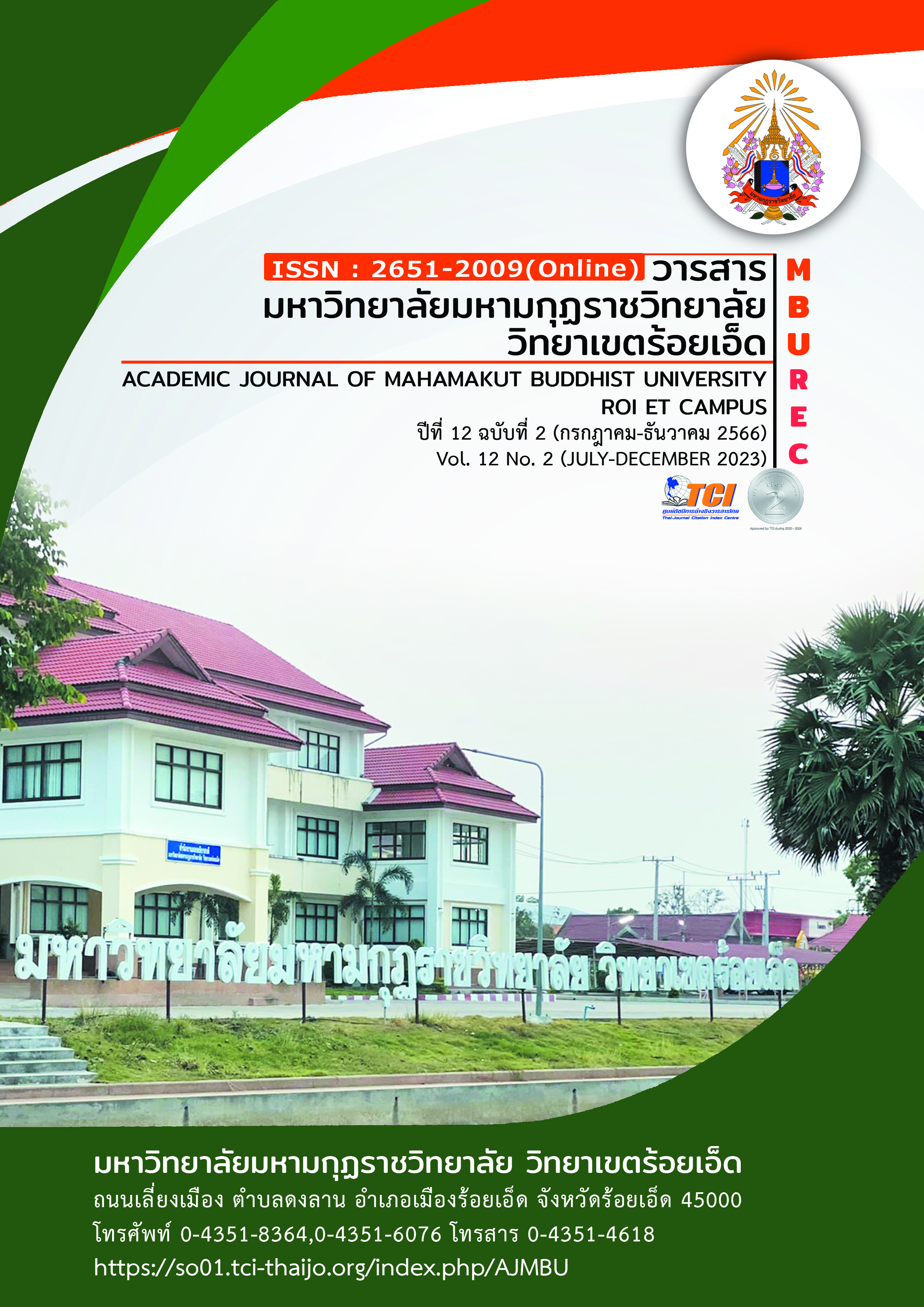EFFECTS OF USING CREATIVE DRAMATIC ACTIVITIES ON SELF-CONFIDENCE BEHAVIOR OF YOUNG CHILDREN
Main Article Content
Abstract
The purpose of this research is to study self-confidence behaviors of preschool children who have received creative drama activities and to compare self-confidence behaviors of early childhood children before and after creative drama activities The target group used in this research, they are early childhood children, male and female, aged between 5-6 years old, studying in Kindergarten 3, semester 1, academic year 2022, Ban Moo Mon School. (Sahamit Wittayakhan), Chiang Khwan District Roi Et Province There were 15 students under the Office of Roi Et Primary Educational Service Area 1. The tools used in this research were 1) 8 creative drama activity plans, 4 units of learning, totaling 32 plans; self-confidence of early childhood Statistics used in data analysis were mean, standard deviation and percentage.
The results of the research revealed that 1) the organization of creative drama activities The process and steps consisted of 4 steps: step 1, motivation step, step 2, preparation step, step 3, staging step, and step 4, conclusion and evaluation step. Encourage early childhood children to have behaviors of self-confidence in 3 aspects: assertiveness aspect of adapting to the environment self-esteem 2) after organizing creative drama activities, early childhood children had higher self-confidence behaviors than before organizing activities.
Article Details

This work is licensed under a Creative Commons Attribution-NonCommercial-NoDerivatives 4.0 International License.
References
กมลา ลำพูน และนิฤมล สุวรรณศรี. (2559). สุนทรียศึกษากับการพัฒนาทักษะทางอารมณ์กรุงเทพมหานคร : มหาวิทยาลัยสวนดุสิต.
กระทรวงศึกษาธิการ. (2560). หลักสูตรการศึกษาปฐมวัยพุทธศักราช 2560. กรุงเทพมหานคร : โรงพิมพ์ชุมนุมสหกรณ์การเกษตรแห่งประเทศไทย จำกัด.
จีรนะ ดวงภูเมฆ. (2560). การพัฒนาการจัดกิจกรรมการเล่านิทานประกอบการแสดงบทบาทสมมติ เพื่อส่งเสริมความเชื่อมั่นในตนเองของเด็กปฐมวัย. วิทยานิพนธ์ปริญญามหาบัณฑิต. มหาสารคาม : มหาวิทยาลัยราชภัฏมหาสารคาม.
ประดินันท์ อุปรมัย. (2555). เด็กกับการพัฒนาบุคลิกภาพพฤติกรรมในวัยเด็ก หน่วยที่ 1-8.นนทบุรี : มหาวิทยาลัยสุโขทัยธรรมาธิราช.
ปิยนันท์ สวัสดิ์ศฤงฆาร. (2560). การสร้างความเชื่อมั่นในตนเอง. สืบค้นเมื่อ 29 กรกฎาคม 2564. จาก https://drpiyanan.com/2017/06/25/article1-2/
ไพศาล วรคำ. (2562). การวิจัยทางการศึกษา. มหาสารคาม : ตักสิลาการพิมพ์.
ศศิลักษณ์ ขยันกิจ. (2561). เปิดสถานการณ์เด็กปฐมวัยพบปรากฎการณ์เร่งเรียนตั้งแต่วัยอนุบาล.สืบค้นเมื่อ 29 กรกฎาคม 2564. จาก https://www.mantanusorn.ac.th/th/news/745
อรวรรณ ชมวัฒนา และวีร์สุดา บุนนาค. (2553). หนังสือเรียนรายวิชาพื้นฐานนาฏศิลป์. กรุงเทพมหานคร : สำนักพิมพ์ บริษัทพัฒนาคุณภาพวิชาการ (พว.) จำกัด.
อัญชลี ฉิมพลี. (2551). ความเชื่อมั่นในตนเองของเด็กปฐมวัยที่ได้รับการจัดกิจกรรมการสอนแบบเดินเรื่อง. วิทยานิพนธ์ปริญญาการศึกษามหาบัณฑิต. มหาวิทยาลัยศรีนครินทรวิโรฒ.
อัญชลี ไสยวรรณ. (2555). การพัฒนาความเชื่อมั่นในตนเองของเด็กปฐมวัย. สืบค้นเมื่อ 29 กรกฎาคม 2564. จาก http://www.e-child-edu.com/youthcenter
Dondi,M. (2019). Defining the skills citizens will need in the future world of work. Retrieved 29 July 2022. From https://www.mckinsey.com/industries/public-and-social-sector/our-insights/defining-the-skills-citizens-will-need-in-the-future-world-of-work


